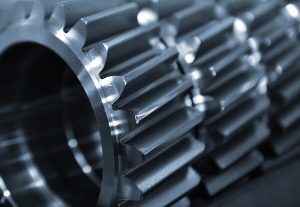A Permanent Magnet Synchronous Motor is a kind of electric motor that, by its definition, permanent magnet motor working principle, a reason that can maintain synchronization with supply current frequency. Its major components include a rotor with embedded permanent magnets and a set of windings in the stator to form a rotating magnetic field. The coordinated integration of these components thus presents efficient and accurate operations for the motors. PMSMs are characterized by their high efficiency, compact size, and capability to provide high torque at a low speed.
Some of the key features of PMSMs that have contributed to their wide usage include high torque-to-weight ratios and high efficiency for energy-saving applications. Other advantages are robust construction, absence of brushes reduced maintenance, and increased reliability. They also feature high-speed operations required in many industries, leading to higher performance compared to other types of motors.

The working of the PMSM drive is based on the interaction between the field of the rotor and stator. When the windings of the stator-carried alternating current, it produces a rotating field. The rotating field then interacts with the field that has been produced by the magnets in the rotor. The synchronized movement occurs when the rotor aligns in the position of the rotating field, at which point torque is produced to drive the rotor’s movement. This interaction of the magnetic field is crucial in ensuring efficiency in the operation under load conditions.
The rotor in a PMSM is usually made up of permanent magnets fabricated from materials such as neodymium-iron-boron or samarium-cobalt. These materials have excellent magnetic characteristics, making it possible to achieve high efficiency and performance in reduced sizes. The torque characteristic and the limits of saturation are heavily dependent on the design of the rotor. Knowledge of the phenomena of magnetic saturation is thus paramount in ensuring that optimal design and reliable operation can be guaranteed at each load condition.
The stator is designed with structures like layered cores and windings to reduce current losses and reach a high level of efficiency. The stator windings are arranged to develop such a field that would effectively interact with the magnets of the rotor. These windings are laid out with very much concern about their placement, which considerably influences many performance aspects of the motor, such as torque generation and operational reliability. Hence, stator tuning configurations play an important role in achieving higher overall efficiency in applications involving PMSMs.
As the use of PMSM drives becomes increasingly popular in applications, it becomes even more important to optimize efficiency to make them even better performers. Approaches to the optimization of efficiency start with the analysis of the constituents of energy losses within the drive system. Some techniques include selecting appropriate materials and designs in the stator and rotor construction to minimize losses. Advanced cooling solutions should be integrated to maintain the optimum temperature of operation, which directly influences motor performance.

In general, the losses in PMSM drives can be grouped into copper losses, iron losses, and stray losses. Copper losses, due to the resistance of the stator windings, depend on the design of the winding and the current level. Iron losses, which arise essentially from the magnetic properties of the core materials, can be reduced by an appropriate choice of laminated materials. The knowledge of these components of loss enables the designer to adopt specific strategies aimed at optimizing the overall efficiency and operational life of the motor.
Effective cooling and thermal management constitute the most important factors contributing to the performance and reliability of PMSMs. A better thermal environment limits the possibility of overheating, which can cause damage or failure of components and thereby reduce consistent performance. Approaches to managing thermal conditions include liquid cooling, air cooling, and heat sinks. By prioritizing these cooling strategies in motor design and operation, the overall efficiency and longevity of the PMSM drives are greatly improved.
Various parameters, which include power factor efficiency ratings and torque ripple smoothness in operating conditions, reliability cases, and scenarios are considered to effectively improve the overall performance of the system in PMSM drives.
The power factor of a PMSM drive describes the ratio between real and apparent power. It expresses how well the motor utilizes electrical energy. Higher power factors relate to efficiency and lower energy costs. Torque ripple describes the variation in torque during rotation. Can affect the motor’s operation by causing vibrations that impact system stability.
Materials development has influenced performance and operating efficiency in Permanent Magnet Synchronous Motor drives. Some of the exciting materials at the forefront of driving PMSM improvement include magnet energy density and laminations that contribute to reducing magnetic loss. Advanced manufacturing techniques, such as machining and additive manufacturing, enable the realization of highly optimized rotor and stator designs that maximize flux with minimum material waste. These developments contribute to reducing production costs and improving operational reliability for PMSM drives.
Enneng is at the forefront of developing materials and techniques to create effective PMSM drives that can meet the change in needs for various applications. Making adjustments to the design of components is crucial, which is necessary for ensuring better performance, improved energy efficiency, and longevity.